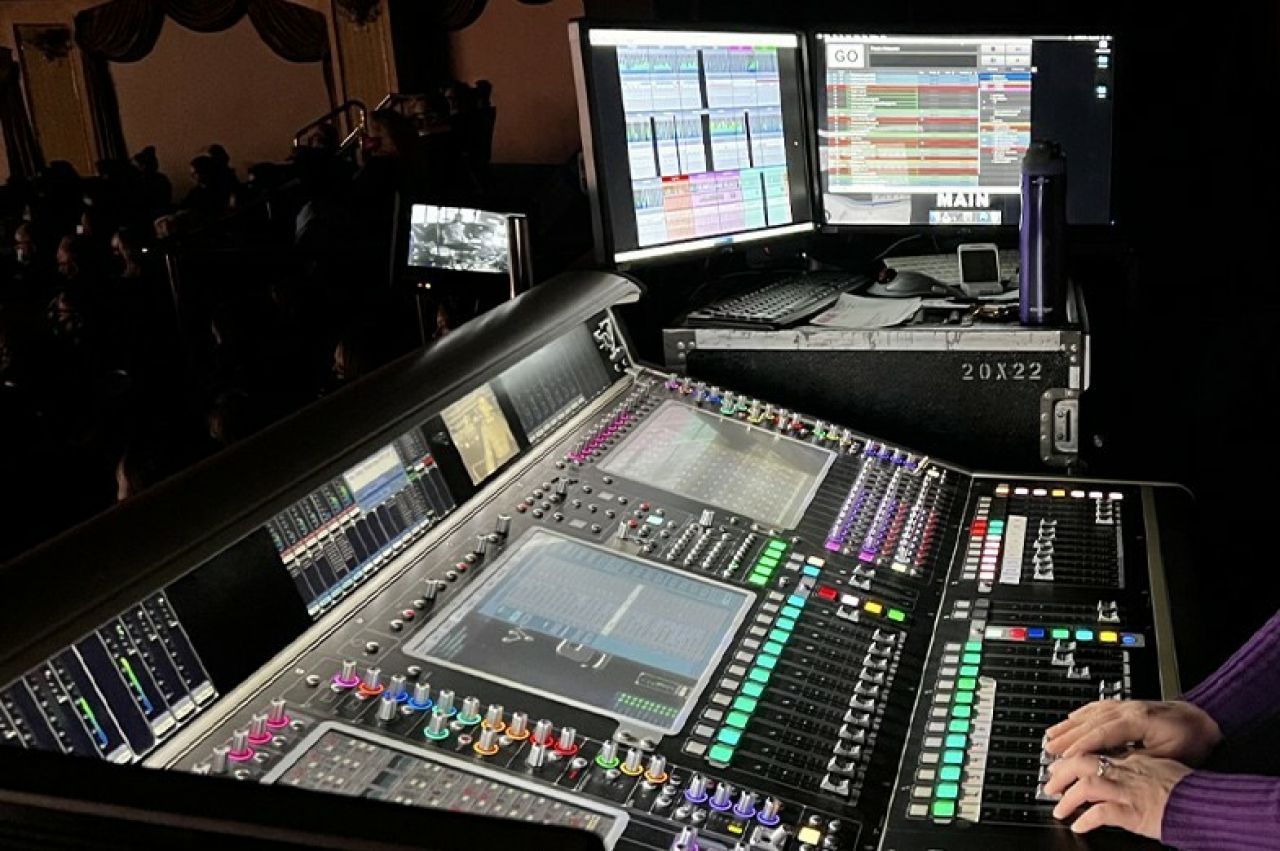November 13, 2023
Sounds good: The evolution of Arts and Architecture's sound design program

In the early 2000s, when sound design in the live entertainment industry was experiencing a technological boom, the administration within the College of Arts and Architecture went all in on developing a professional training program that would get Penn State in the mix.
It was a sound move.
Almost 20 years later, the Sound Design program within the School of Theatre has pushed the bounds of the industry's technology to become a leader in sound design education while training dozens of students who have gone on to work for the biggest names in the industry.
Curtis Craig, associate professor of sound design and founder of the program, came to Penn State in the fall of 2001 from a theatre company in Texas and was empowered by Dan Carter and Richard Durst, school director and dean at the time, to build a program.
“They knew that there were possibilities for this type of program,” Craig said, “and to their credit, they had the vision to move it forward.”
At the same time the western Pennsylvania native was settling into his new role at Penn State, technology within the live entertainment industry was evolving so rapidly that Craig said it felt like new gear and techniques were being introduced weekly.
The digitization of live entertainment meant that production possibilities were becoming endless, and production elements that were only being used by big-name, large-scale shows were making their way into community theaters.
“It was fascinating because as the industry was changing, so was the process of mixing shows and, ultimately, the definition of a sound designer,” Craig said. “I suddenly found myself having to answer the question 'what does a sound designer do?' a little differently.”
Sitting in his office chair and surrounded by speakers, screens, mixing boards, microphones and a seemingly infinite number of electronic gadgets and gizmos that could produce any sound you might imagine, Craig cracked a big smile and gave his short answer to the question.
“A sound designer is responsible for everything you hear at a show,” said Craig, who in the professional realm is an acclaimed and international award-winning sound designer.
Of course, the sound designer is responsible for mixing the sound of a show, but as Heather Augustine, a 2011 graduate of the program and one of the College of Arts and Architecture's 2023 Alumni Award winners, said, it is a comprehensive and collaborative effort.
“A sound designer will be the point person to talk with the director and make sure their visions agree or can work together,” Augustine said.
With the artistic vision established, she said the sound designer will then pick the speakers and determine the configuration, which can be a single speaker, an array, a large system by the stage or sets of smaller “delay” systems that are closer to the audience.
The sound designer is also responsible for any sound effects that are used. All the decisions exist within the overall sound of the show, which can be produced in a small theatre, a rock concert arena, cruise ship stage, Broadway or a Disney theme park attraction, to name a few.
“One of the things we do here at Penn State, which I'm very proud of, is that when we build these systems, we do so knowing that they are going to be moved constantly,” Craig said. “That means that somebody has to learn how to design it, hang it and move it. If you're on tour, you have to go through the process every night.”
In the moving process, system components are often damaged or destroyed, which highlights the sound designer's unseen role as a problem solver.
Craig crafts his pedagogy around that role, and Augustine said that has gone a long way toward not only preparing students for the industry but establishing Penn State graduates as in-demand professionals.
“There are some things you'll never learn until you're in real world situations, but Curtis does everything he can to cover as much as possible and give us hands-on experience,” Augustine said. “Touring companies will specifically recruit at Penn State or find us during conferences because they know we come with a solid foundation of skills.”
The Bachelor of Fine Arts in Theatre Design and Technology Program, with a focus on sound design, accepts two new students per year, which keeps class sizes at eight and allows for a personal and comprehensive education. Craig actively recruits students from avenues such as high school theatre conferences and performances, which he said goes a long way to making sure Penn State has top-tier talent.
Lauren Petrocelli is a fourth-year student from Allentown who is on track to graduate in spring 2024. During her time in the program, she has designed and mixed several student productions as well as worked with touring acts at the Bryce Jordan Center, Eisenhower Auditorium and Schwab Auditorium.
This semester, she was the sound designer for the Penn State Centre Stage production “Hit the Wall” and mixed “Natasha, Pierre and the Great Comet of 1812.” She is also director of production for Penn State's annual Movin' On festival in the spring.
Petrocelli said the networking and training over the last four years have positioned her well to hit the ground running in the industry.
“The live production opportunities have given me a deeper understanding of how sound can have a huge impact on storytelling,” Petrocelli said. “Penn State has been the perfect place for me to learn and I feel very prepared to start my career.”
With two decades behind him, Craig said the success of students both present and past is a large part of what inspires him to push the program forward in an ever-changing industry.
“When I came to Penn State, I signed a two-year contract. That was more than 20 years ago,” Craig said. “I feel that, in some ways, I'm just getting started.”